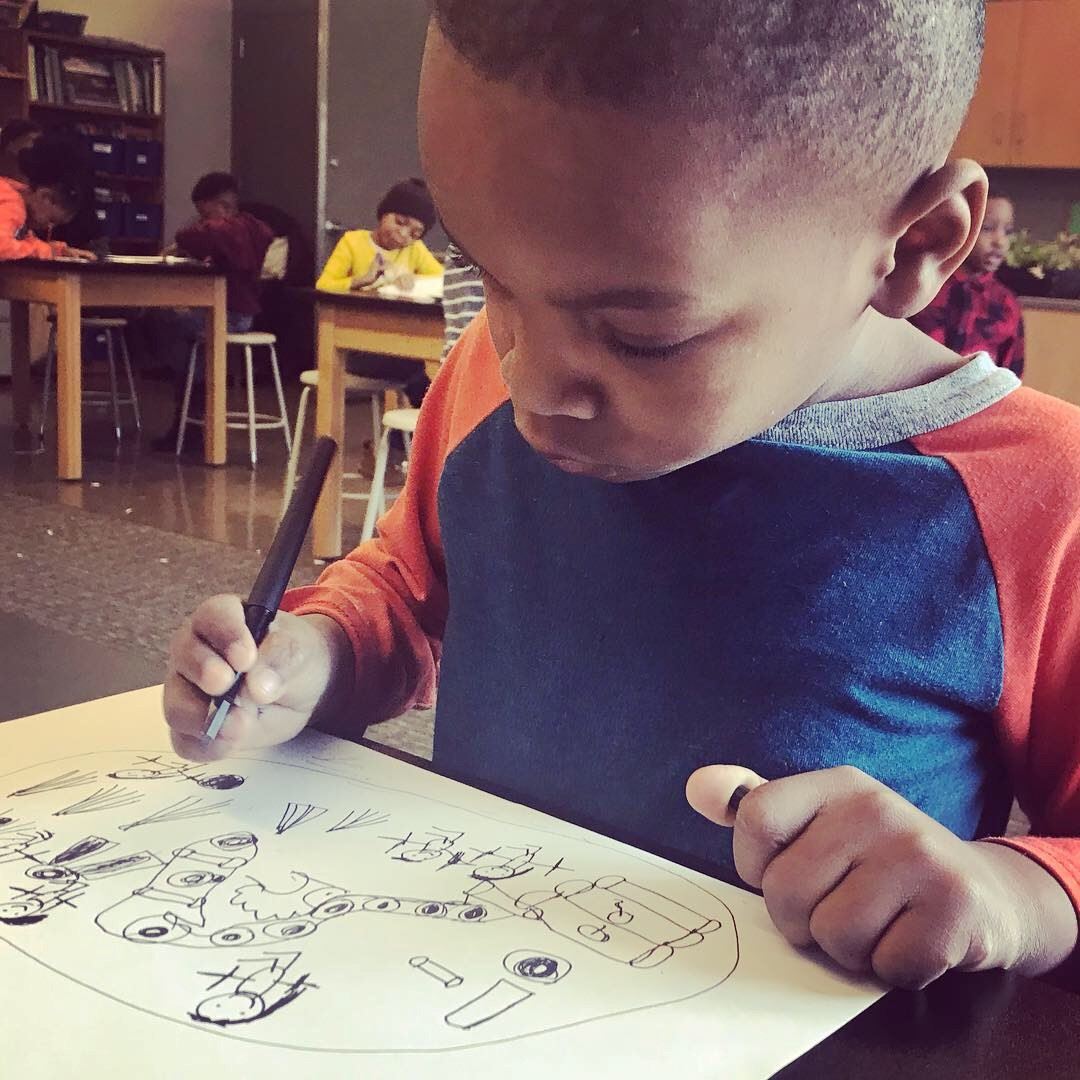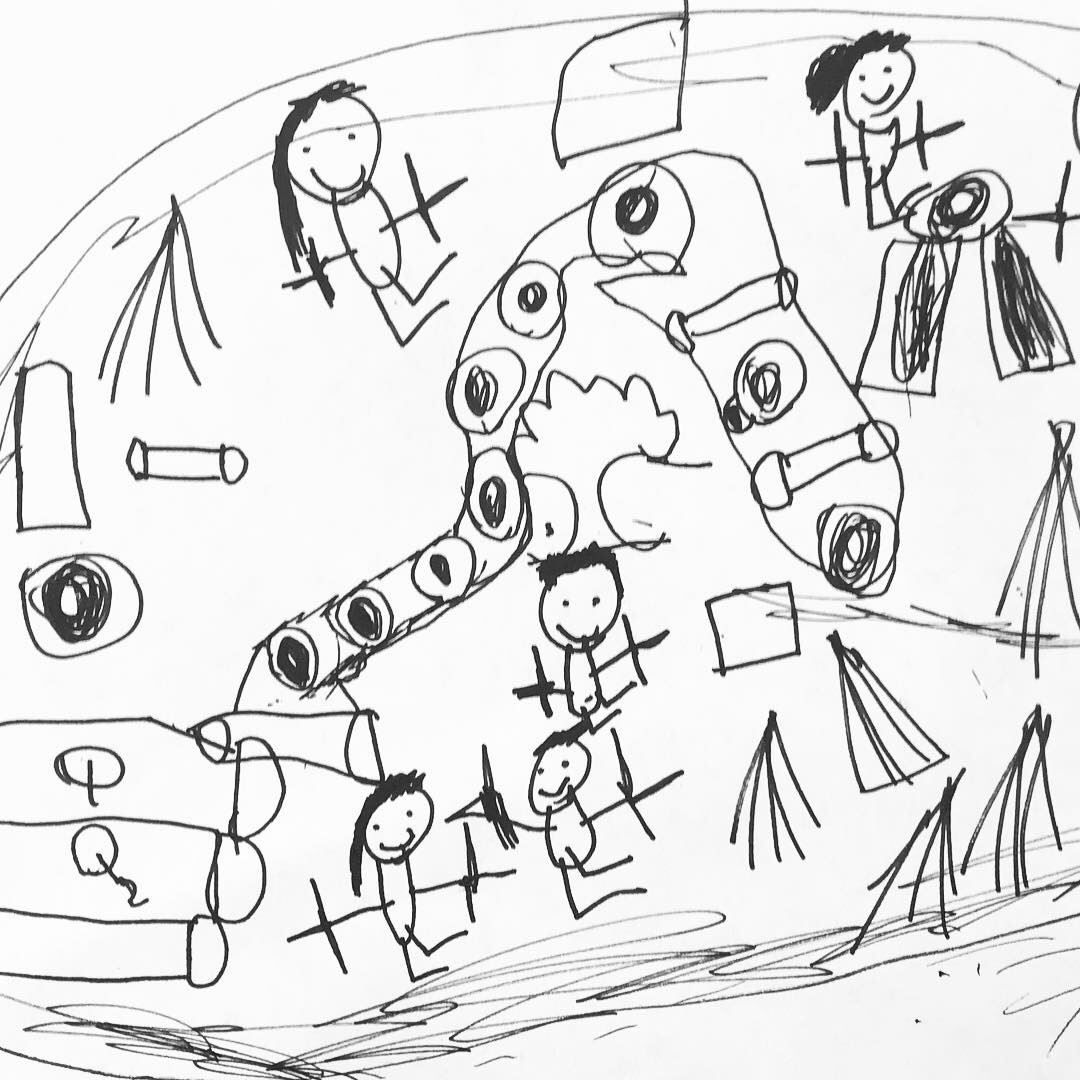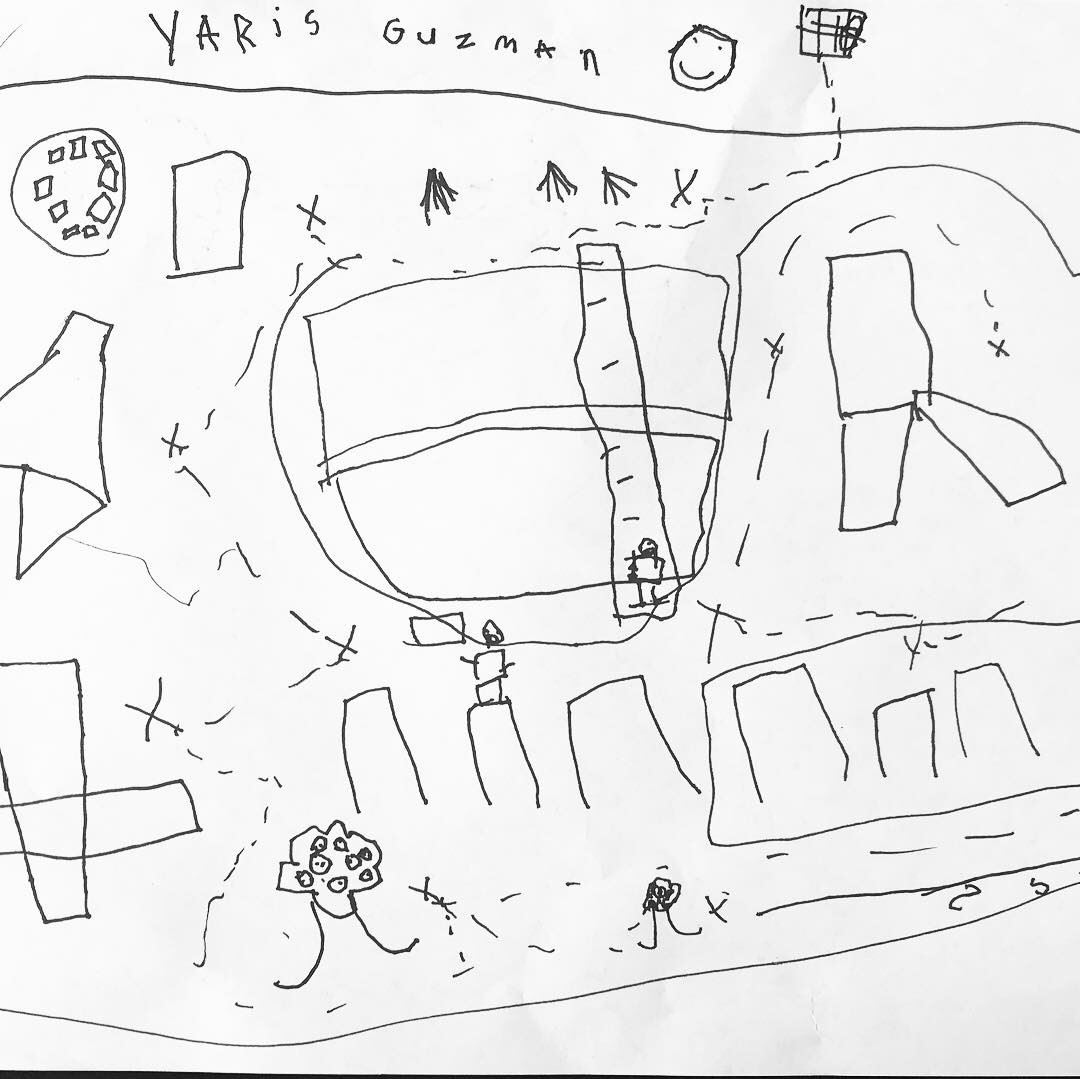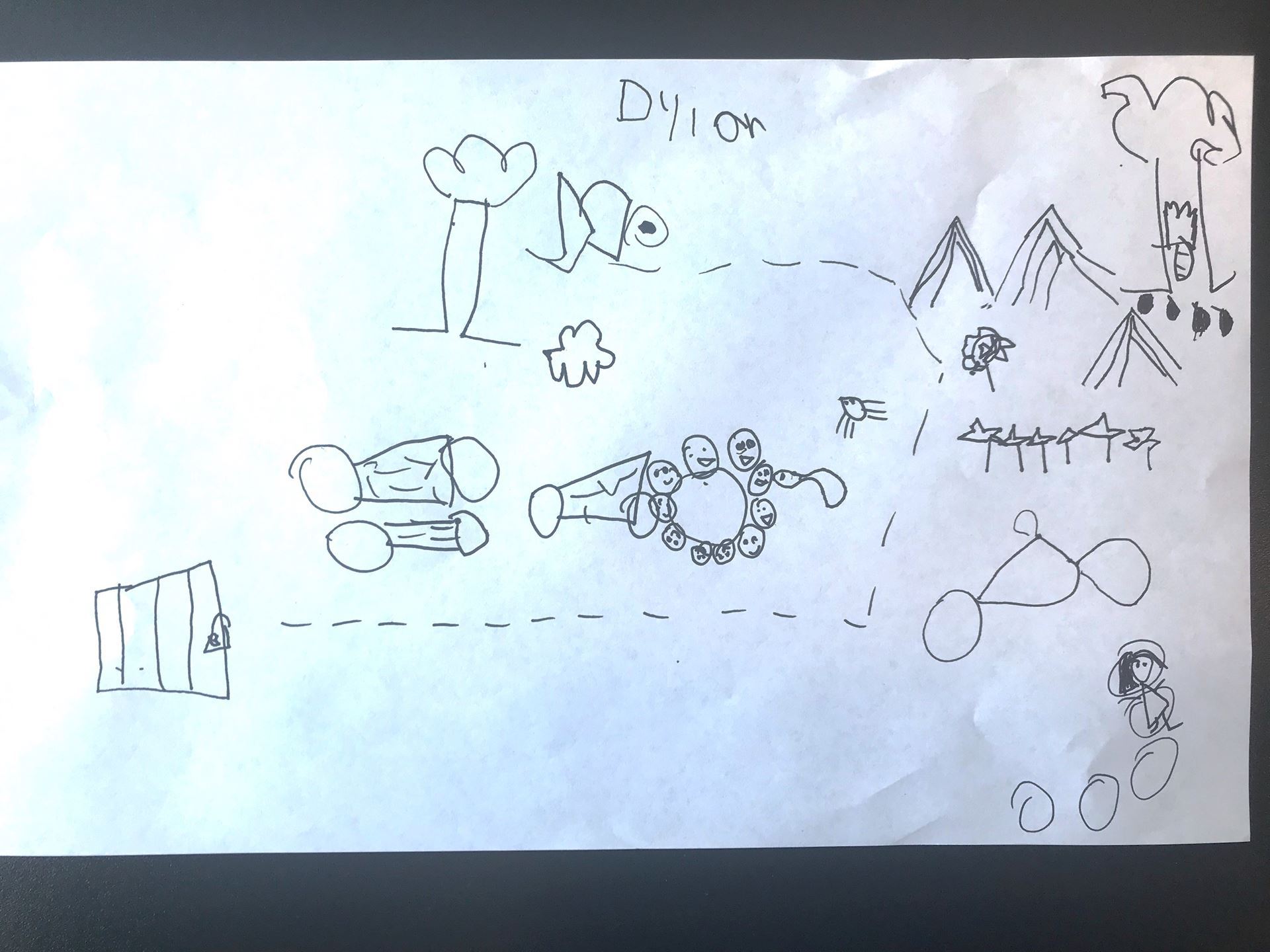Written by: Rachel Schwartzman, Director/ Lead teacher of Forest Days


“This is the log where I saw two worms come out. I was a little scared to pick them up, but I did."
On a recent day during an “indoor forest choice time,” many children chose to make maps. Maps can teach us so many things. Through the map, we get a window into the child’s understanding of place, and how they are making meaning of their time in the forest.
- What do they remember?
- How do they arrange the landmarks in relation to each other?
- Are they including themselves and others?
- What elements from the natural have they noticed and where?
- Does their map show imagination or scientific representation?
- What is chosen to be large and small?
- What emotions have they included?
- What is holding the most meaning to them?

“This is the see saw that I made. This is the log we always climb on.”

“This is where we walk in. This is the circle where we sing and these are the logs. This is a tree and these are the seeds and that’s a squirrel. These are the stick houses and these are the leaves. This is the log that we climb up. These are the logs that we have to step on. This is me sitting down in my sit spot.”
I find the making of maps to be a valuable tool for the teachers and the children toward deepening our understand of our work in the forest. Ideally, we will return to map making throughout the year in many different ways. Maybe we will make a model of our “forest school” back in the classroom out of clay or natural materials. Maybe we will make maps of the best places to find acorns or seed pods. Maybe we will make maps of the animal tracks that we find on our paths. The possibilities are vast, and the format of representing thinking through maps is accessible, relatable and powerful!
.png)